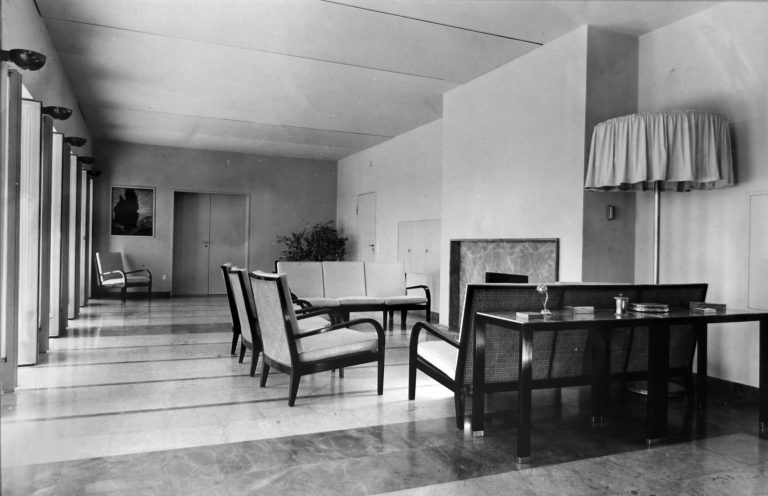
Aesthetic
Schocken was a consummate feinschmecker, believing that form, function and contents were equally important. He placed immense value on the design of the products he sold, the buildings he built, and the books he published. The Schocken department stores were masterpieces of 20th century modernist architecture. The products that were sold in these stores were praised for their simple elegance and practical functionality. The advertisements, signs, brochures, even price tags, were designed by Bauhaus artists like Laszlo Moholy-Nagy and Herbert Beyer.
Schocken’s zeal for aesthetic purity was highly visible in his total approach to book publishing. Schocken Verlag, his Berlin-based publishing house, produced the most beautiful Jewish books that came out from Germany in the 1930’s. The clean modernism of the book covers, the exquisite binding, and the special fonts that he commissioned embodied Schocken’s passion for simplicity, beauty, and functionality.
Among other sources, Schocken’s design philosophy was influenced by the German Werkbund movement of industrial design, and by the acclaimed designer Peter Behrens, whose studio employed the likes of Mies van der Rohe, Le Corbusier and Walter Gropius. Schocken marveled at the determination to “wage a war against kitsch by forcing buildings and products to fit their function”. He was also heavily influenced by the Bauhaus School of design. These artistic preferences, that Schocken quickly turned into concrete products and buildings, were sharply out-of-step with the reactionary values of the Nazi regime.